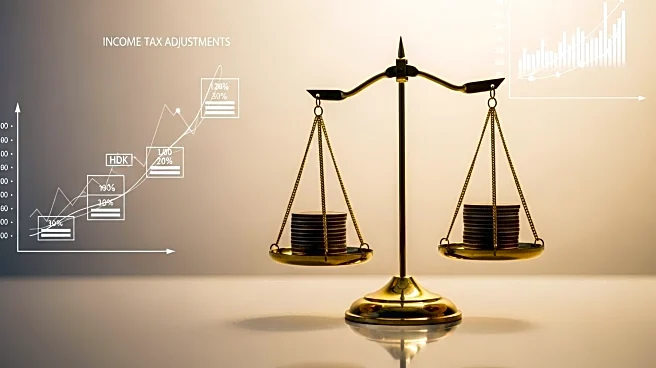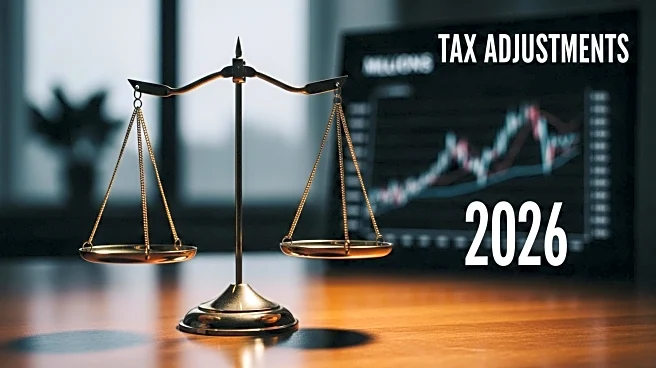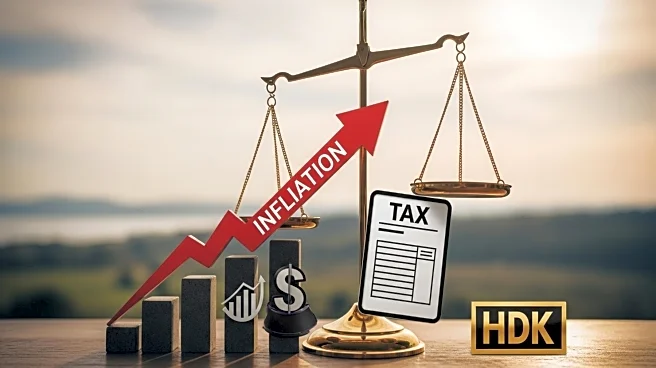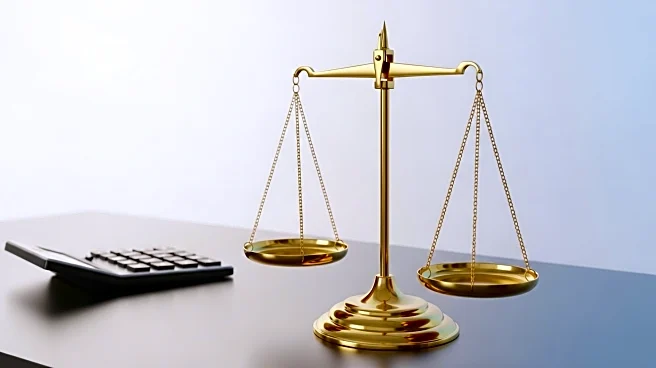What is the story about?
What's Happening?
The IRS has announced adjustments to the federal income tax brackets for the year 2026, aiming to account for inflationary pressures. This annual recalibration is designed to provide some relief to taxpayers by potentially lowering their tax liabilities when filing next year. The adjustments reflect changes in the cost of living, ensuring that taxpayers are not unduly burdened by inflation. This move is part of the IRS's regular updates to tax codes, which are intended to align with economic conditions and maintain fairness in tax obligations.
Why It's Important?
The adjustment of tax brackets is significant as it directly impacts the financial planning of American taxpayers. By accounting for inflation, the IRS helps prevent 'bracket creep,' where taxpayers are pushed into higher tax brackets due to inflation rather than actual increases in real income. This can lead to more disposable income for individuals, potentially boosting consumer spending and economic activity. Additionally, these changes can influence public sentiment towards tax policies and government responsiveness to economic conditions.
What's Next?
Taxpayers will need to review the new brackets and standard deductions to understand how their tax liabilities might change. Financial advisors and tax professionals are likely to update their strategies to optimize tax savings for clients. The IRS will continue to monitor economic indicators to make further adjustments if necessary, ensuring that tax policies remain aligned with economic realities.
AI Generated Content
Do you find this article useful?













